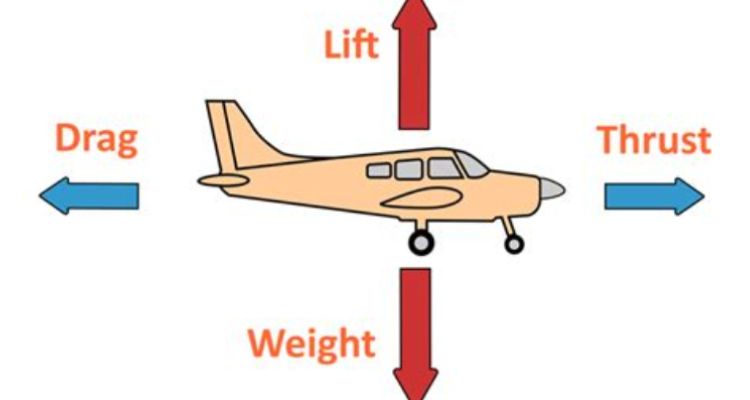
The miracles of modern flight may seem routine in our tech-savvy world, but the science behind it remains as fascinating as ever. Aerodynamics, the study of the behaviour of air as it interacts with solid objects like aircraft, is a pivotal aspect of aviation. This article demystifies the science behind aircraft design, helping you understand why planes fly and what makes them so efficient.
The Four Forces of Flight
Aircraft are engineered to counteract or utilise four primary aerodynamic forces: lift, weight (gravity), thrust, and drag.
Lift
Generated by the wings, lift is what enables an aircraft to ascend. It counters the force of gravity.
Weight (Gravity)
This force pulls the aircraft towards the Earth and is counteracted by lift.
Thrust
Produced by engines, thrust propels the aircraft forward.
Drag
This is the resistance an object encounters when moving through a fluid. In aviation, drag opposes thrust.
Bernoulli's Principle
Bernoulli's Principle is foundational to understanding how lift is created. It explains that as air flows over the curved upper surface of the wing, it moves faster and creates a low-pressure area. The high pressure under the wing generates lift.
Wing Shape and Airfoil Design
Aircraft wings are specifically designed to optimise lift. The shape of the wing, known as the airfoil, plays a critical role in this.
Angle of Attack
The angle between the oncoming air and the wing's chord line is the angle of attack, crucial for controlling lift.
Aerodynamics in Aircraft Control
Roll, Pitch, and Yaw
Understanding how aerodynamics affects roll (rotation around the front-to-back axis), pitch (rotation around the side-to-side axis), and yaw (rotation around the vertical axis) is crucial for aircraft control.
Computational Fluid Dynamics (CFD)
Advancements in Computational Fluid Dynamics (CFD) allow engineers to simulate aerodynamic behaviour, substantially accelerating the aircraft design process.
Frequently Asked Questions
What are the four forces of flight?
The four primary forces affecting flight are lift, weight (gravity), thrust, and drag.
How does Bernoulli's Principle relate to aviation?
Bernoulli's Principle explains how lift is generated by creating a low-pressure area above the wing as air flows over its curved surface.
What is Computational Fluid Dynamics (CFD) in aircraft design?
Computational Fluid Dynamics (CFD) is a technology that simulates fluid flow, including aerodynamic effects, to enhance and speed up aircraft design.
Conclusion
Understanding aerodynamics isn't just for engineers or pilots; it's a fascinating subject that reveals the invisible forces at work every time an aircraft takes to the skies. Knowing the science behind it adds a new level of appreciation for the marvel that is aviation.
